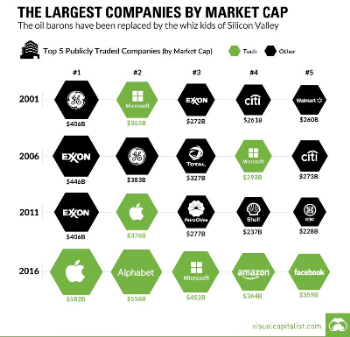Jeremie Averous's Blog, page 70
August 24, 2017
Towards Office-Less Organizations
Since 5 years I have been operating my small consulting company globally without offices (why pay the overhead when we spend most of our time at clients’ offices?!?). It always seems strange to acquaintances, but that’s the way many businesses run today. In this example, ‘The company behind WordPress is closing its gorgeous San Francisco office because its employees never show up‘.
 Working from Home
Working from HomeWorking from home or on the road is the new normal. I hope that architects will take into account this requirement for home offices a bit more systematically. Traditional businesses would need to notice. In large organizations I still find people who can’t work remotely using video conferencing tools on their laptops (or even still using desktops!). What a waste!
I am not saying that having a co-located team is not appropriate in certain instances. For example I am deeply convinced that continuous team geographical colocation is an essential success factor in project execution and probably also in certain instances of creative endeavors. But in most cases, temporary offices can be rented out when they are needed. And office space needs to be more flexible – for example project team co-location can be more effective outside the traditional organization offices.
Flexible offices are the future, as is remote work across time zones and locations. Traditional office spaces are due for obsolescence. And this will happen sooner than some might expect!

August 22, 2017
How face-to-face social interaction leads to a longer life
In this excellent Washington Post blog ‘Prioritizing these three things will improve your life — and maybe even save it‘, a point is made that “Smoking, drinking, exercise and even heart problems are not predictors of a person’s longevity — a person’s close relationships and social integration were.”
 Too bad for social networks and digital freaks, “It’s not enough to text or email. The actual health benefits of socializing are only achieved through in-person contact “Face-to-face contact releases a whole cascade of neurotransmitters and, like a vaccine, they protect you now in the present and well into the future,” [psychologist Susan Pinker] said“.
Too bad for social networks and digital freaks, “It’s not enough to text or email. The actual health benefits of socializing are only achieved through in-person contact “Face-to-face contact releases a whole cascade of neurotransmitters and, like a vaccine, they protect you now in the present and well into the future,” [psychologist Susan Pinker] said“.
“Face-to-face contact releases a whole cascade of neurotransmitters and, like a vaccine, they protect you now in the present and well into the future. And it doesn’t even have to be long, close interactions to have an immediate effect. Making eye contact, shaking someone’s hand, giving someone a high-five lowers your cortisone levels and releases dopamine, making you less stressed and giving you a little high”
Well let’s give this computer or phone a short break and have a little face-to-face interaction, shouldn’t we?

August 19, 2017
How Digital Can Change Justice – Predictive Justice in Practice
As a Business Angel I see quite a few startup ideas and the concept of Predictice has struck me as a major experiment of digital applied to public service (disclosure: I liked it so much they got some investment from me too, just for the sake of following up their evolution more closely!).
 The concept is to use all available judicial decisions for France (soon to be open-source but elsewhere available on some professional databases) to analyze the data using syntax associations and thus be able to give statistics on the expectations of a decision concerning a particular case. To be relevant, the algorithms have to be built with professionals using a specific process; so algorithms are being progressively developed in several judicial fields (family, private property etc).
The concept is to use all available judicial decisions for France (soon to be open-source but elsewhere available on some professional databases) to analyze the data using syntax associations and thus be able to give statistics on the expectations of a decision concerning a particular case. To be relevant, the algorithms have to be built with professionals using a specific process; so algorithms are being progressively developed in several judicial fields (family, private property etc).
The results are quite astounding as the system can give the average chance and compensation amount in fine grained detail based on the details of the situation and even the geographic location of the jurisdiction (which will certainly raise some eyebrows as it appears that there are regional differences).
The interesting thing is that it brings justice to a new level. It does not replace lawyers or judges, but it brings the debate to another level. As a support to the work of humans it brings substantial value. It gives valuable feedback to jurisdictions. More generally, with this startup Big Data transforms the way justice is being practiced.
There are certainly many fields of public service that are ripe to be disrupted in the same manner.

August 17, 2017
How Government Needs to Shift with the Collaborative Age – Influencing the Digital Sphere
Government’s role needs to shift significantly with the Fourth Revolution. In the past it used a lot of resource for data capture and crunching, which is now done automatically and more quickly using digital tools. In a series of post ‘Teaching Digital at the Kennedy School of Government: A Road Map‘, David Eaves outlines some principles.
 His main point is that “It is the digital sphere?—?and the rules, norms and structures that come to define it—that will, in many cases, control the physical sphere. This is why digital’s impact on the economy, democracy, and society should not be underestimated. It is also why understanding, shaping and engaging in those rules, norms and structures is essential to a policy school.”
His main point is that “It is the digital sphere?—?and the rules, norms and structures that come to define it—that will, in many cases, control the physical sphere. This is why digital’s impact on the economy, democracy, and society should not be underestimated. It is also why understanding, shaping and engaging in those rules, norms and structures is essential to a policy school.”
Some key questions remain to be resolved: “What government can and should look like in a digital age is a real and pressing question“. ” Can governments become learning organizations that move at the speed of digital?“. It needs a fundamental rethink of how government conducts its operations and what value it adds to the People. The issue of regulation of the digital world is also acute.
Solutions are not yet available in a standard format but this area is certainly a very interesting field to watch as experiments are conducted in certain countries!

August 15, 2017
How the Fourth Revolution Changes Business Leadership
The image of the evolution of the largest market capitalizations in the US shows how the most valuable businesses evolve from old-fashioned resource intensive businesses to new technology.
 This transformation of the business world is of course facilitated by the current primary resource downward cycle, and of course this mainly reflects people expectations of future gains, which can be somewhat of an illusion. However the shift is so massive that it is worth noting. Even large manufacturing companies like GE have disappeared. Institutions are weakened by the shift they were not able to tackle early enough.
This transformation of the business world is of course facilitated by the current primary resource downward cycle, and of course this mainly reflects people expectations of future gains, which can be somewhat of an illusion. However the shift is so massive that it is worth noting. Even large manufacturing companies like GE have disappeared. Institutions are weakened by the shift they were not able to tackle early enough.
The investment power represented by the massive cash reserves and the leverage that can be raised on their valuation makes these companies potent transformers of the world. Yet at the same time by making digital ubiquitous and almost free, they facilitate the emergence of the next disrupters that might shake their very foundations.
The list may change, but the most valuable companies will certainly remain in the technology space for years to come, far into the Collaborative Age.

August 12, 2017
How to Value Big Data?
Right now Big Data is the trend and the promise, but the reality is that it is very hard to squeeze value of it. Based on current information, we are still in the very learning curve and not all experiments have held their promises in this area.
 It seems that it really takes a lot of data to produce something really useful, and even with vast amounts of data, it is difficult to make sense and produce applications that can really be of predictive use. Compared to the predictions just a few years ago, the real breakthrough does not seem to have really happened.
It seems that it really takes a lot of data to produce something really useful, and even with vast amounts of data, it is difficult to make sense and produce applications that can really be of predictive use. Compared to the predictions just a few years ago, the real breakthrough does not seem to have really happened.
It is therefore still very difficult to value the actual troves of Big Data. Their value should ultimately be derived from their usefulness and the applications they allow. At the same time there is a (low) cost associated to maintaining all this data and there might be a point where decision-makers might have to balance this cost with the value it provides in the short term.
I would be interested to have hints about how to value data from the readers of the blog to see how this area progresses.

August 10, 2017
How User-Generated Data Should be Better Valued
The excellent Economist article ‘The world’s most valuable resource is no longer oil, but data: the data economy demands a new approach to antitrust rules‘ raises a superbly framed question.
 Railway, phone and oil tycoons of the late 19th century saw their empires dismantled by anti-trust laws to create competition and better prices for consumers. Anti-trust laws are still being applied strictly in the US and in Europe, looking mainly to the global market position.
Railway, phone and oil tycoons of the late 19th century saw their empires dismantled by anti-trust laws to create competition and better prices for consumers. Anti-trust laws are still being applied strictly in the US and in Europe, looking mainly to the global market position.
“What has changed? Smartphones and the internet have made data abundant, ubiquitous and far more valuable. […] Meanwhile, artificial-intelligence (AI) techniques such as machine learning extract more value from data. […] This abundance of data changes the nature of competition. […] By collecting more data, a firm has more scope to improve its products, which attracts more users, generating even more data, and so on. […] Access to data also protects companies from rivals in another way [preventing new upcoming startups to have access to the vast troves of data]”
The fundamentals of the recommendations to follow in the paper is to give value to data and user access. This is valued in the rare transactions to acquire companies, but not really valued as part of a market by authorities.
Availability of data on users should be better valued in the economy as this becomes the driving force of the Collaborative Age. And this should be part of authorities’ decision-making. The question remains: beyond advertisement, how to value troves of data generated by users?

August 8, 2017
How Technology Creates Induced Wage Transfer and Overall Well-Being Improvement
This extremely interesting article in Medium ‘The Robots Have Taken Over (Our Brains)‘ offers quite a different view of the impact of technology on wages and well being.
 The well documented Baumol’s cost disease shows that when “real wages in low productivity industries actually rise like those in high productivity industries, as workers leave low-productivity industries for higher productivity industries. This simultaneously increases their income, as well as forces the employers in the lower productivity industries to raise salaries to retain and attract replacement labour.”
The well documented Baumol’s cost disease shows that when “real wages in low productivity industries actually rise like those in high productivity industries, as workers leave low-productivity industries for higher productivity industries. This simultaneously increases their income, as well as forces the employers in the lower productivity industries to raise salaries to retain and attract replacement labour.”
Further, the author view is that “what Baumol called a dilemma, and what we have come to describe as a disease, is actually precisely the salve for technological productivity gains to be distributed, even to parts of the economy that aren’t experiencing productivity growth. The real disease would be if Baumol’s dilemma didn’t exist?—?but it does.”
Therefore when looked at the global level, technology creates an improvement of well being for the entire society by an induced redistribution of wage and thus value. The author explains the apparent dilemma of lower apparent wage growth versus productivity observed in recent years.
This is an interesting subject which shows that we don’t still quite understand what happens when such a transformation happens like the Fourth Revolution.

August 5, 2017
What Part of the Future Should We Try to Invent?
Should we predict or invent the future? Seth Godin in his blog clearly asks the question and explains his preference:
 “The most common way to deal with the future is to try to predict it. To be in the right place at the right time with the right skills or investments.
“The most common way to deal with the future is to try to predict it. To be in the right place at the right time with the right skills or investments.
A far more successful and reliable approach is to invent the future. Not all of it, just a little part. But enough to make a difference.”
While I fully agree with this view, the question comes: what part of the future should we try to invent?
It is obvious that out lives are influenced by many events and factors we can’t really influence directly. Sometimes we try to invent a future but can’t really manage to achieve this ambition.
Pending further analysis, my suggestion would be to try to invent that part of the future that resonates within our wider network. What we can invent within that segment might have a wider influence or remain local. Still what is within our power is to change things within our network.
Let’s focus on what we can invent and change that will influence our wider network and set to change the world!

August 3, 2017
Why Protectionism Is A Transient Illusion
The international political stage has been shaken in the past few month by populist claims for protectionism. This theme has encountered substantial success, most visibly in the USA. It is but an illusion with the progress towards the Collaborative Age. And these claims won’t stand for long in particular if protectionism is really implemented.
 I know of a live example in Malaysia in the automotive industry. The country has tried to develop an indigenous car maker, Proton and implemented substantial barriers to the import of foreign-made cars. Within a decade, Proton cars were substandard and lagging the modern progress of technology. Once another manufacturer setup to build locally modern cars, the local manufacturer crumbled.
I know of a live example in Malaysia in the automotive industry. The country has tried to develop an indigenous car maker, Proton and implemented substantial barriers to the import of foreign-made cars. Within a decade, Proton cars were substandard and lagging the modern progress of technology. Once another manufacturer setup to build locally modern cars, the local manufacturer crumbled.
This was because an industry in a protected environment will have no incentive to improve and invest, and will eventually collapse while the rest of the world progresses. Protectionism can only possibly work on a temporary basis to develop some new capability.
In today’s ever faster world, protectionism is an illusion. Those experiments that are attempted will soon enough demonstrate the inadequacy of the concept. That does not mean policies should not address those affected by the transformation of the economy. But maintaining illusory protections will create eventually a worst fate, only later.
The Protectionism Illusion won’t last long.




